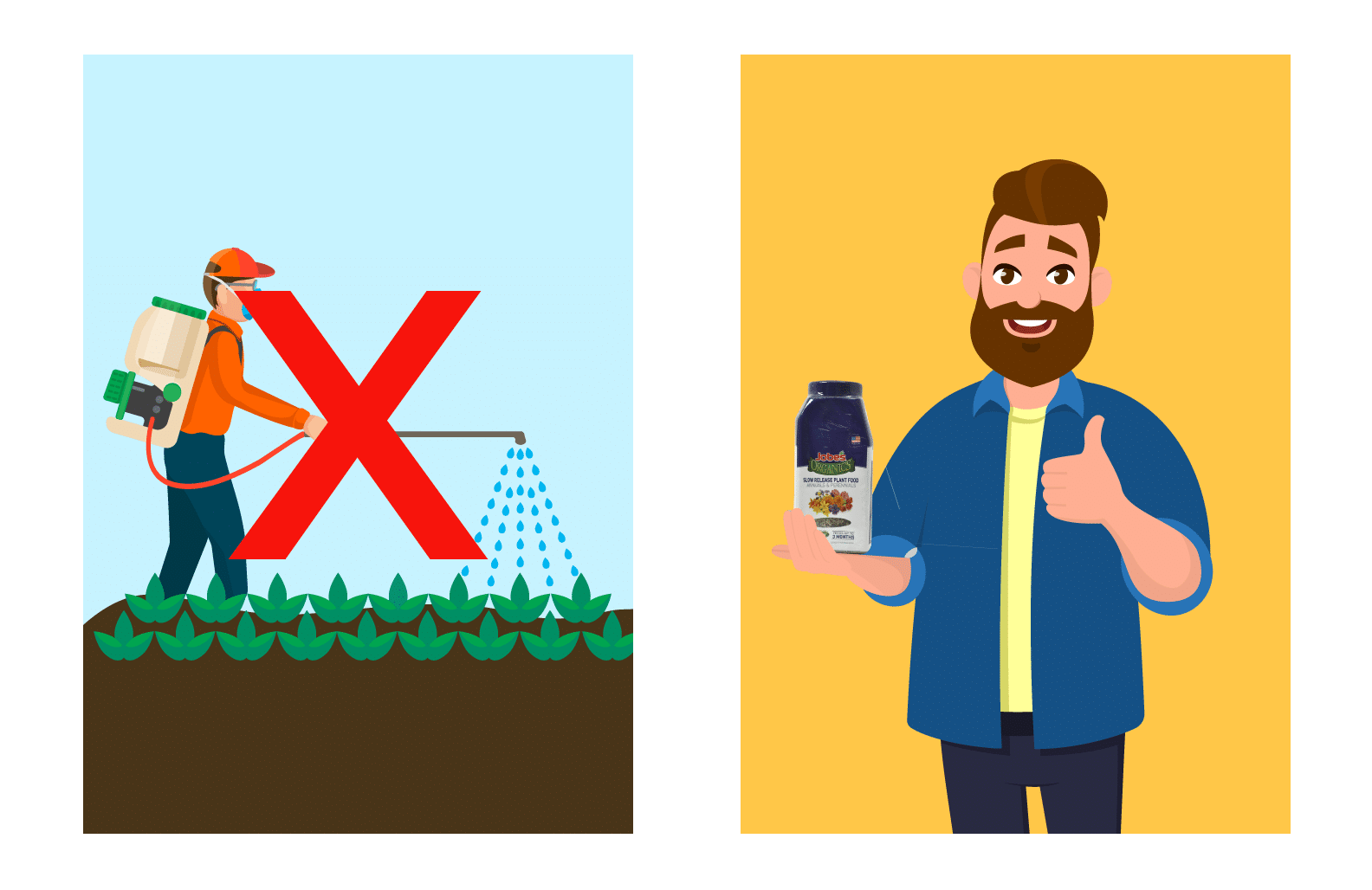
Bees. We’ve all seen them. Most of us have been stung by at least one. As a result, many see bees as merely a nuisance – or the bugs that make that sweet, sweet honey. But they are much more than that. Bees play a vital and irreplaceable role in our ecosystem, pollinating plants and contributing to the health of green spaces everywhere.
Unfortunately, bees have seen better days. Due to a multitude of reasons, the world’s bee population has been dropping for years. This is a big problem, as bees perform 80% of the world’s pollination.
Fortunately, there are things that you can do to help save the bees, even in your own backyard. These steps will help you create a bee-friendly garden that will bee perfect for the yellow and black honey-makers.
Avoid Pesticides and Chemicals

It can be tempting to utilize powerful pesticides and chemicals to keep pesky critters away and assist in your gardening efforts. But if you do, you won’t just be chasing away bees, but also actively killing them.
Pesticides can have a negative impact on bees in multiple ways. Indirectly, pesticides can harm their food supplies, making it more difficult for bees to gather the food they need to survive. Pesticides and herbicides can also impact bees directly, poisoning them in varying ways and making huge dents in populations.
Even if you don’t make any changes to your planting process, cutting down on the use of harsh chemicals is a good start to making your garden welcoming for bees.
Plant Bee-Friendly Plants
Bees are attracted to plants that have readily available nectar – a sweet, sugary substance produced to attract pollinating insects like bees – and the fine plant reproductive powder called pollen, which doubles as protein-rich food for workers. Mixing in bee-friendly plants can go a long way in making them feel at home. Here are some plants that are famously bee-friendly.
Lavender
Lavender’s gorgeous color, tall blooms, and lovely fragrance make it a fantastic addition to any garden. While its famous, eponymous shade of purple is the most common color, hybrid lavender plants come in other attractive colors like rose, blue, and yellow.
Daisies
It’s hard to go wrong planting daisies, a classic flower that looks good anywhere. Daisies refer to any flower in the Asteraceae family of flowering plants, and so they can be a wide range of colors and sizes. Shasta daisies and their classic yellow and white color are great choices, as are Gerber daisies and their bright collection of petal colors that includes deep purples and luscious reds.
Buckwheat
If you’re looking for a plant that attracts bees and can contribute to your edible garden, Buckwheat is a great choice. Despite its name, it isn’t a wheat, and its flowers blossom in a white and pink bloom that is attractive to both people and bees. Buckwheat grain is high in protein and can be made into a gluten-free flour.
Embrace the Weeds (To an Extent)
For many gardeners, weeds are evil invaders that should be eradicated. But bees don’t quite think the same way. To them, weeds like dandelions are simply additional sources of nectar and pollen. Dandelions are especially important for bees, as they are the first flowers to bloom in the spring and are vital in sustaining bee populations until the thick of spring.
So, to help bees out, simply let some flowering weeds happen. Don’t let them get out of control or harm your plants, but if you’ve got some unused space or don’t plant your plants very close together, letting some dandelions emerge can help out your bee friends.
Invest in a Diverse Plant Portfolio
Different types of bees and other pollinators are more active at different times of the year. To ensure that you’ll be able to provide the pollen and nectar they’ll need, make sure to plan your garden with a good mix of early bloomers and late bloomers. If your plants are only flowering for a short time, you won’t be able to fully support the bee population near you throughout the year.
Jobe’s is Your Partner in Saving the Bees
Whether you’re a professional or a backyard amateur, you can take steps to help save the bees with your garden – and Jobe’s is there to help you every step of the way. Our variety of organic gardening products will equip you with the right tools to succeed and garden in a way that’s best for you and your environment. Come along on the journey with us.


